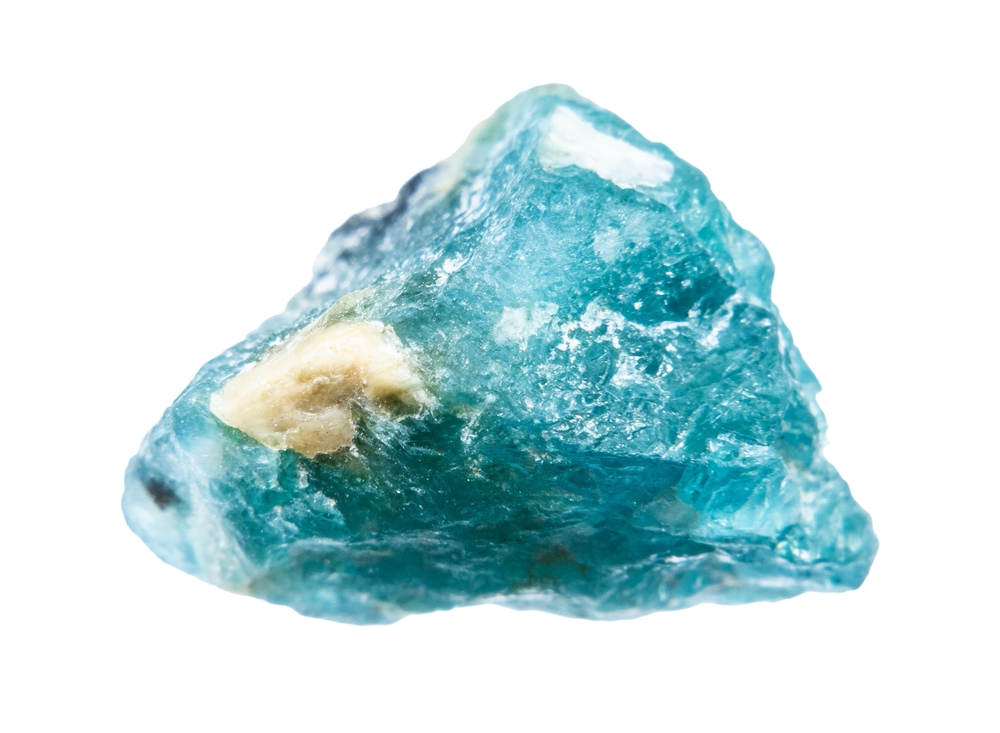Insects are often admired for their vibrant colors, but their importance extends far beyond beauty. These small creatures play a vital role in maintaining the balance of ecosystems around the world. From pollinating plants to controlling pest populations, their contributions are essential to the survival of countless species, including humans. Whether they help recycle nutrients, support food chains, or ensure biodiversity, these colorful insects are true ecological powerhouses. Each species adds its own unique value to the environment, highlighting the interconnectedness of life.
Monarch Butterfly (Danaus plexippus)
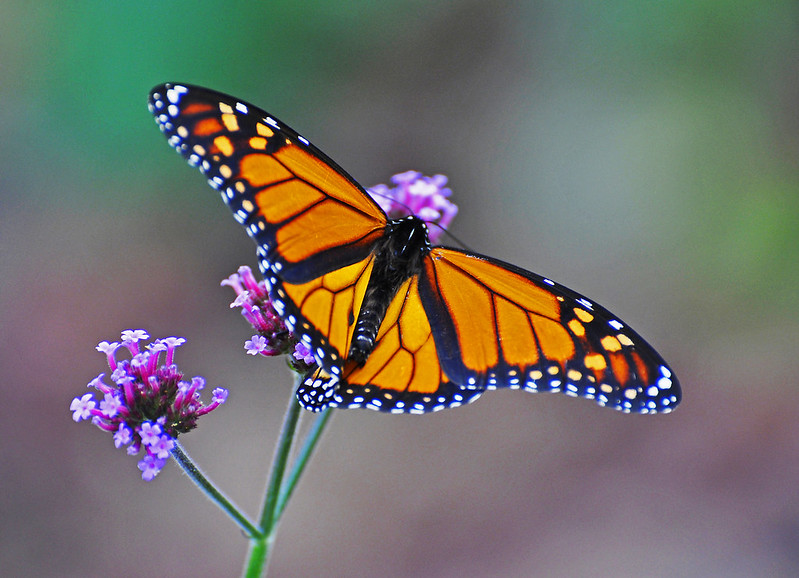
The monarch butterfly is well-known for its vibrant orange wings laced with black veins and white spots. This species is vital for pollination as it feeds on nectar from a variety of flowers. During its annual migration, monarchs travel thousands of miles, contributing to gene flow between plant populations. Caterpillars of this species feed on milkweed, which provides them with toxins that deter predators. Monarchs also serve as an important food source for birds, amphibians, and small mammals. Their seasonal movements reflect environmental changes, making them ecological indicators.
Jewel Beetle (Buprestidae family)
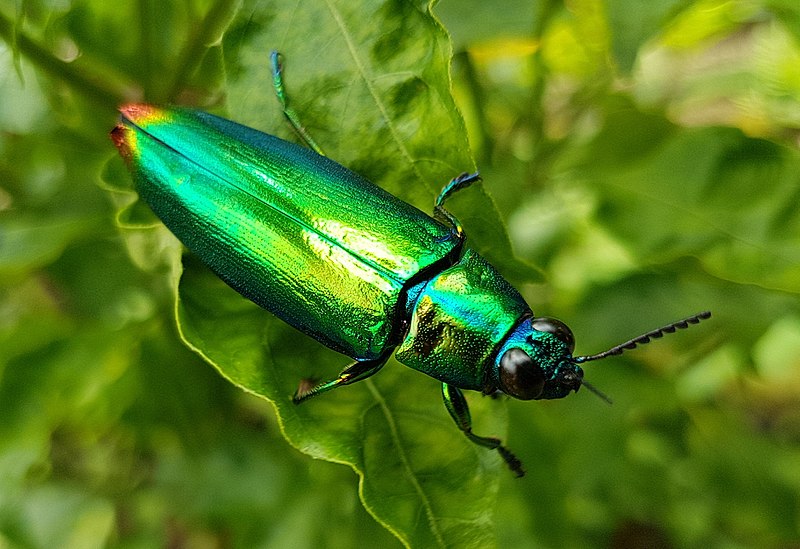
Jewel beetles dazzle with their metallic, iridescent exoskeletons, which can range from blue to green and violet. These beetles are key decomposers, breaking down dead or decaying wood, which helps recycle nutrients into the ecosystem. Some species of jewel beetles are also pollinators, helping plants reproduce as they feed on nectar. Their larvae, however, bore into wood and play a role in the natural decay of trees. These insects are often prey for birds, mammals, and larger insects, contributing to the food chain. The jewel beetle’s colorful appearance often provides camouflage within sun-dappled forests.
Green Darner Dragonfly (Anax junius)
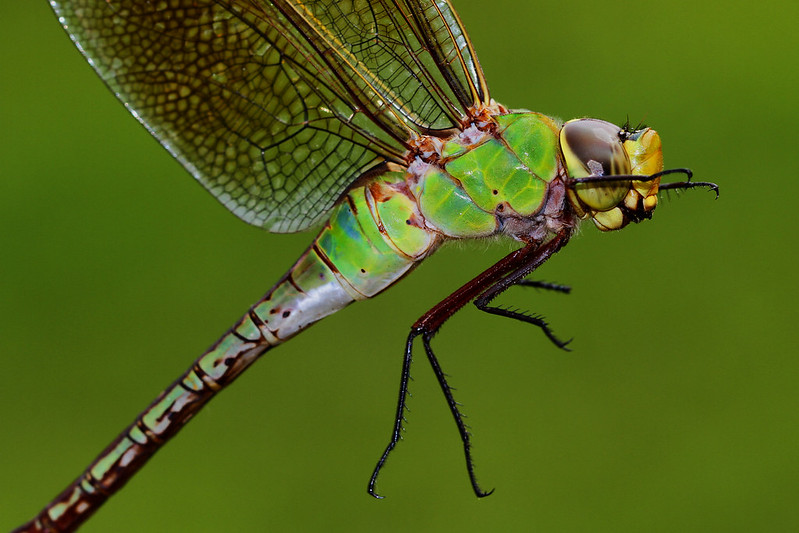
The green darner dragonfly, with its striking emerald body and blue abdomen, is a master predator in wetlands and ponds. It controls populations of mosquitoes, flies, and other small insects by feeding on them both as larvae and adults. Dragonfly larvae, called nymphs, are aquatic and play an important role in freshwater ecosystems by preying on aquatic invertebrates. Adults provide food for birds, frogs, and fish. The green darner is a migratory species, aiding in the balance of insect populations across different regions. Its swift and agile flight also makes it a critical player in pest control.
Orchid Bee (Euglossini tribe)
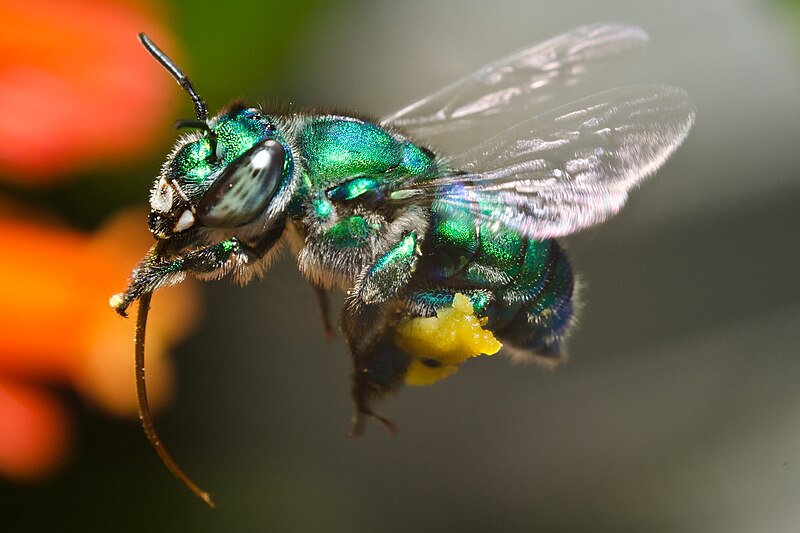
Brilliant metallic hues of blue, green, and gold characterize the orchid bee, which thrives in the tropical rainforests of Central and South America. These bees are crucial pollinators for many orchids, as they collect aromatic compounds used in mating rituals. Without them, many orchid species would struggle to reproduce, which would impact forest biodiversity. Orchid bees also contribute to pollination of other flowering plants, making them essential to ecosystem health. Their ecological role extends beyond pollination, as they are preyed upon by birds, spiders, and other predators. The symbiotic relationship between these bees and orchids highlights their specialized niche.
Peacock Spider (Maratus species)
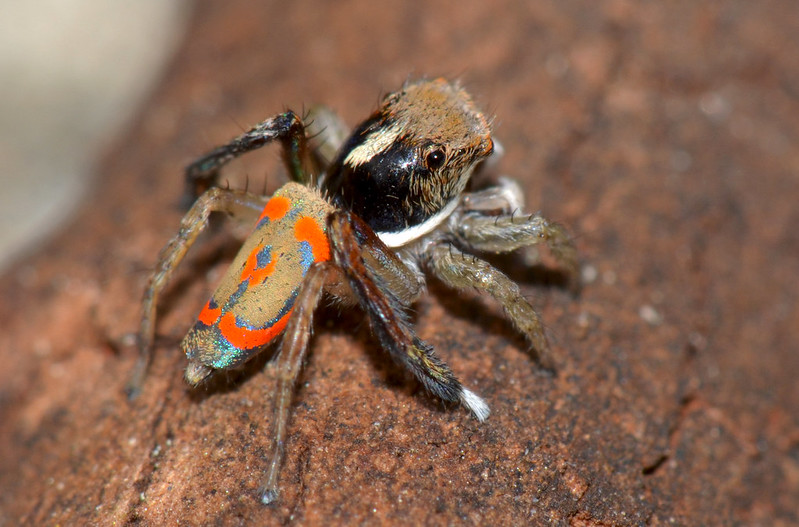
The peacock spider, despite its small size, captivates with its multicolored, iridescent body used in elaborate courtship displays. Found in Australia, it plays a role as both a predator and prey within its ecosystem. As a predator, it helps control insect populations, particularly flies and moths. Its bright colors and movements attract mates, contributing to genetic diversity within the species. Although small, peacock spiders are hunted by birds and larger spiders. Their presence in ecosystems helps maintain the balance of species populations.
Red Milkweed Beetle (Tetraopes tetrophthalmus)

The red milkweed beetle stands out with its deep red coloration and black spots, commonly found on milkweed plants. It plays a crucial role in pollination, as it feeds on both nectar and leaves, helping plants reproduce. By feeding on milkweed, the beetle ingests toxins that make it less appealing to predators. It contributes to the survival of milkweed, which is essential for other species like monarch butterflies. The beetle also serves as prey for birds and other larger insects. Its striking coloration warns potential predators of its toxicity, serving as a form of defense.
Harlequin Ladybird (Harmonia axyridis)
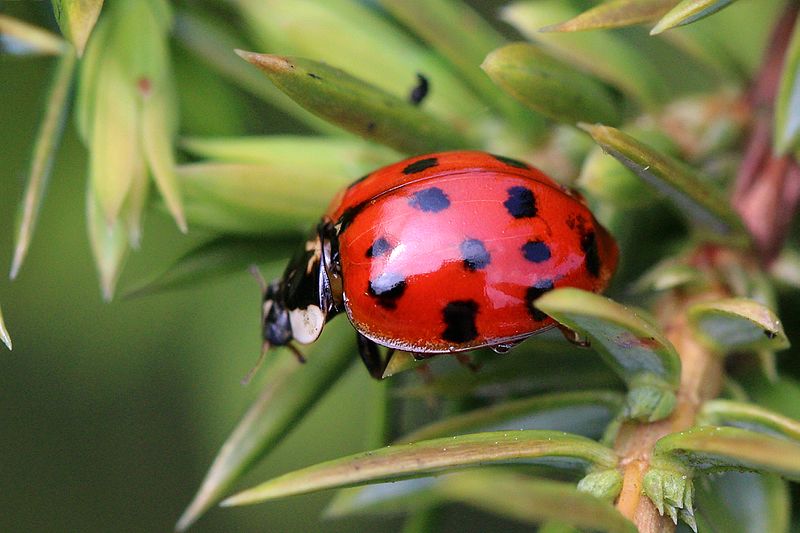
The harlequin ladybird displays a wide range of colors, from orange to red with black spots, and plays a pivotal role in controlling aphid populations. By preying on these plant pests, the ladybird helps maintain the health of crops and gardens. Its voracious appetite for aphids and other soft-bodied insects makes it a valuable natural pest control agent. However, its introduction into new areas can sometimes lead to competition with native ladybird species. Despite this, the harlequin ladybird’s impact on pest management is largely positive. It also serves as food for birds, wasps, and spiders, contributing to the larger food web.
Glasswing Butterfly (Greta oto)
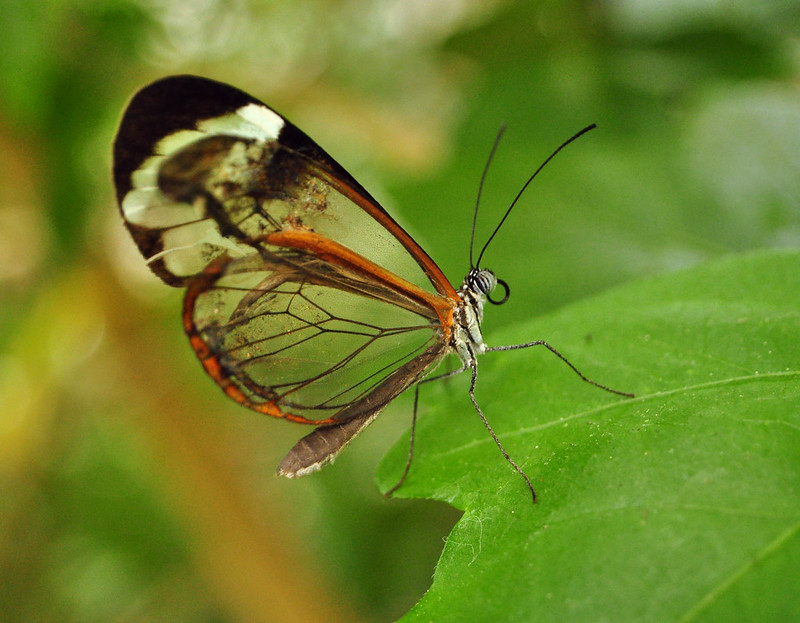
The transparent wings of the glasswing butterfly, accented with orange and black, allow it to blend into its surroundings effortlessly. Found in Central and South American rainforests, this butterfly is an essential pollinator for a wide range of flowering plants. Its unique wing structure not only offers camouflage but also reduces predation from birds and lizards. The glasswing’s larvae feed on toxic plants, which provide them with a chemical defense against predators. These butterflies are also important food sources for small mammals and birds. Their delicate role in the ecosystem emphasizes the interconnectedness of species in tropical forests.
Rainbow Stag Beetle (Phalacrognathus muelleri)
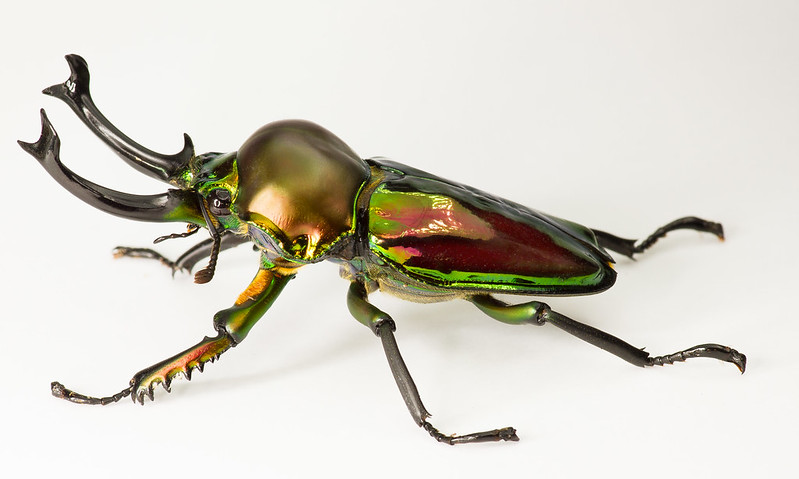
With its metallic green and purple hues, the rainbow stag beetle is an eye-catching insect native to Australian rainforests. It contributes to the decomposition process by feeding on rotting wood and organic matter, recycling nutrients back into the soil. The larvae play an even more significant role by breaking down decaying timber, which promotes forest health. Adult beetles also participate in pollination as they search for food among flowering plants. Birds and mammals feed on both adult beetles and their larvae, adding to the beetle’s importance in the food chain. Its presence supports ecosystem balance in forested areas.
Madagascan Sunset Moth (Chrysiridia rhipheus)
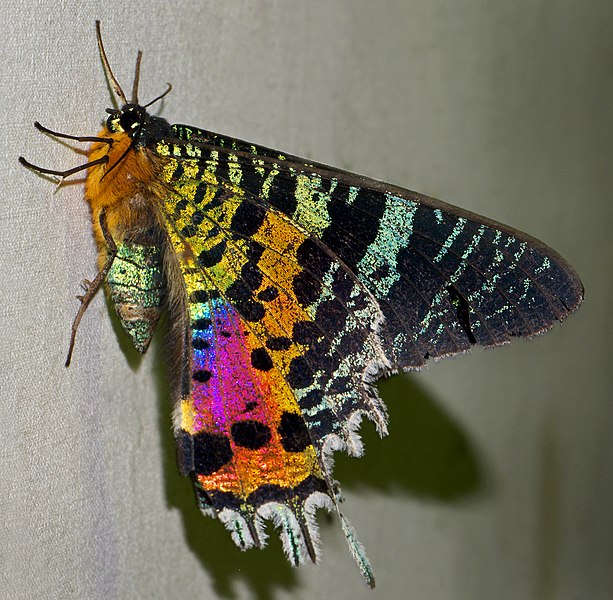
The Madagascan sunset moth is known for its iridescent wings, adorned with vibrant shades of red, green, and blue. It plays an essential role in pollination, particularly of certain native plants found in Madagascar. While feeding on nectar, the moth ensures the transfer of pollen between flowers, supporting biodiversity. Its striking appearance makes it a target for predators, yet its toxic body deters many would-be threats. As larvae, these moths feed on poisonous vines, making them unpalatable to most predators. This moth’s brilliant colors and unique ecological niche make it a key player in maintaining plant species diversity.
Green Lacewing (Chrysopidae family)
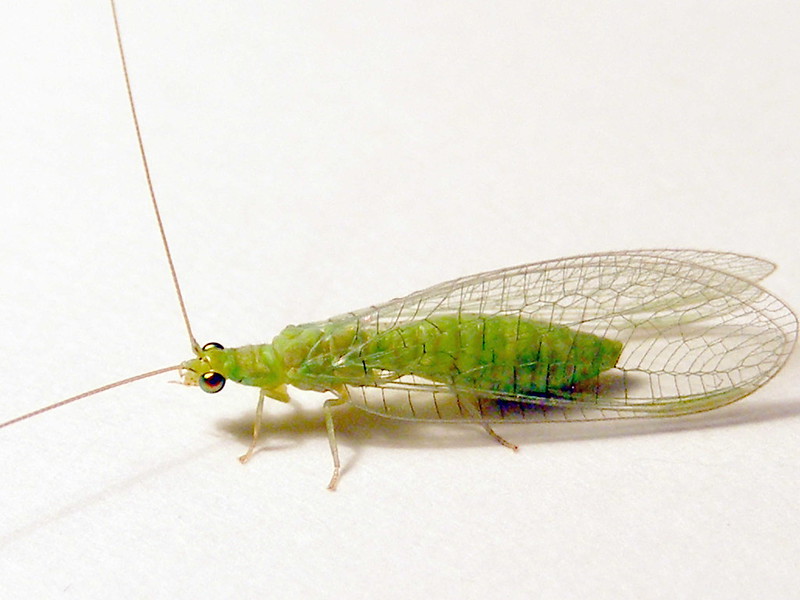
The pale green wings of the green lacewing shimmer delicately, belying the insect’s fierce predatory nature. Both larvae and adults feed on aphids, mites, and other pest insects, making them vital for pest control in agricultural systems. The larvae, known as “aphid lions,” are particularly aggressive in keeping plant-destroying pests at bay. Green lacewings are widely used in organic farming for natural pest management. Birds and other insectivores depend on lacewings as a food source, balancing the ecosystem. Their life cycle, from egg to adult, ensures that ecosystems remain healthy and productive.
Jewel Wasp (Ampulex compressa)
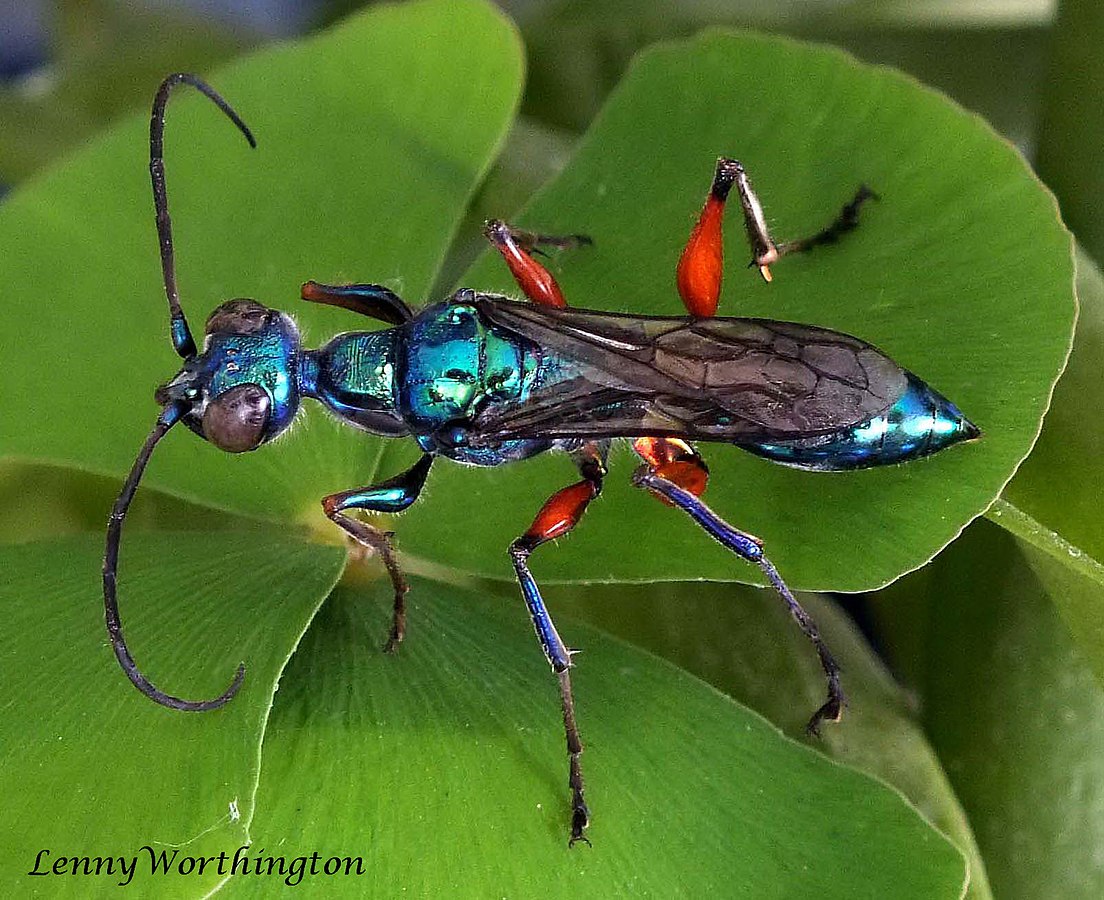
The jewel wasp, with its iridescent blue and green body, has a fascinating role in ecosystems as a parasite controller. It uses cockroaches as hosts for its larvae by injecting venom to immobilize them, then laying its eggs inside the still-living roach. The larvae feed on the roach, keeping insect populations in check. Although its parasitic behavior might seem gruesome, the jewel wasp prevents pest outbreaks, particularly in tropical environments. Birds and reptiles feed on adult wasps, ensuring their place in the food chain. Its unique life cycle highlights the complexity of ecological interactions.
Rosy Maple Moth (Dryocampa rubicunda)
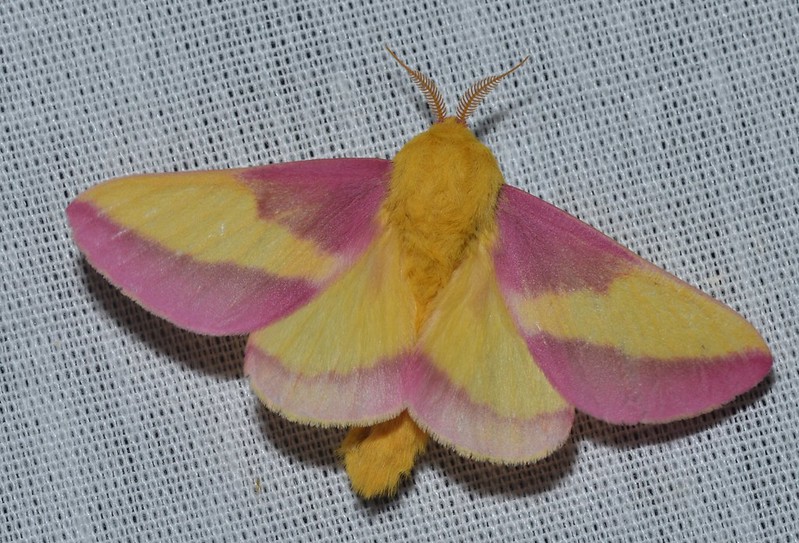
The rosy maple moth boasts a stunning palette of pink and yellow, often found in North American deciduous forests. It plays a significant role in pollination, particularly at night when it visits flowering plants. As larvae, known as greenstriped mapleworms, they feed on maple tree leaves, aiding in natural pruning that promotes tree health. Though their leaf consumption can sometimes be detrimental in large numbers, they help maintain forest dynamics. Birds, small mammals, and predatory insects rely on these moths as a food source. Their bright colors serve as a defense mechanism, warning predators of their toxic nature.
Blue Morpho Butterfly (Morpho peleides)
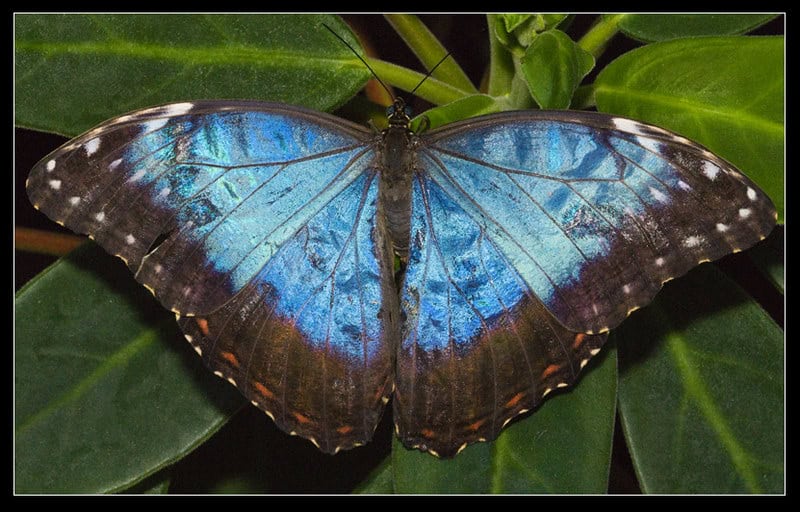
The blue morpho butterfly, with its dazzling metallic blue wings, is a symbol of the tropical rainforests of Central and South America. As it flits from flower to flower, it plays an important role in pollination, contributing to the reproduction of many rainforest plants. Its larvae feed on toxic plants, which provides them with chemical defenses against predators. The butterfly’s brilliant color serves both as a deterrent to predators and as a way to camouflage when its wings are closed. Birds, amphibians, and mammals rely on blue morpho butterflies as part of the food chain. Its ecological role as a pollinator and prey species underscores the interconnectedness of rainforest life.
Cardinal Meadowhawk Dragonfly (Sympetrum illotum)
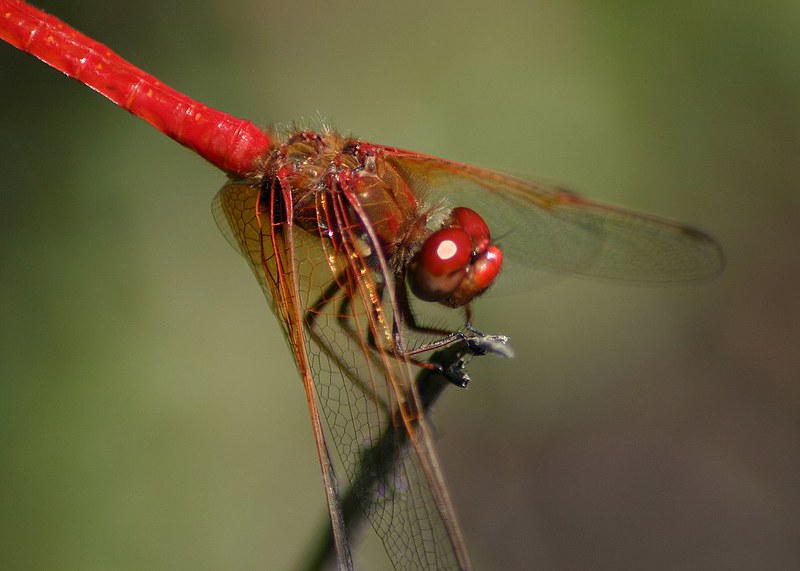
The cardinal meadowhawk, with its bright red abdomen, is a key predator in wetland ecosystems. It controls populations of mosquitoes and other small insects, which helps reduce the spread of diseases like malaria and dengue fever. The nymphs are aquatic and play a crucial role in the freshwater food chain, preying on small fish and invertebrates. Adult dragonflies serve as a food source for birds and other predators, maintaining ecosystem balance. Their presence in wetlands indicates a healthy environment, as they are sensitive to pollution and habitat changes. The cardinal meadowhawk’s striking appearance makes it an important visual marker for scientists monitoring wetland health.
Blue-winged Grasshopper (Oedipoda caerulescens)
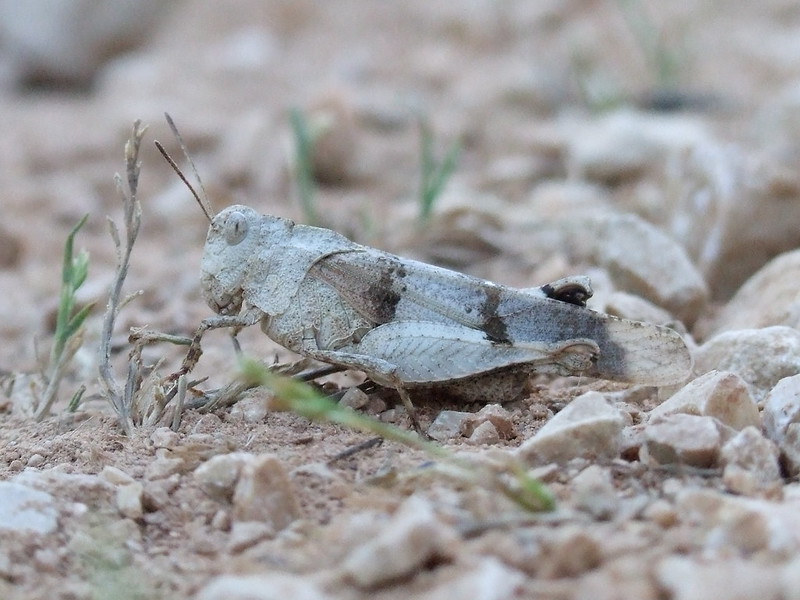
The blue-winged grasshopper surprises with its vivid blue wings, which are only visible in flight. It inhabits dry, stony areas where it plays a role in maintaining grassland health by feeding on various plants. Grasshoppers, including this species, are essential prey for birds, reptiles, and small mammals, contributing to the balance of ecosystems. Their grazing also helps control plant overgrowth, maintaining the natural structure of grasslands. The blue-winged grasshopper’s camouflage allows it to blend with its surroundings, minimizing predation. As part of the food web, it supports biodiversity and ecosystem stability.
Emerald Swallowtail Butterfly (Papilio palinurus)
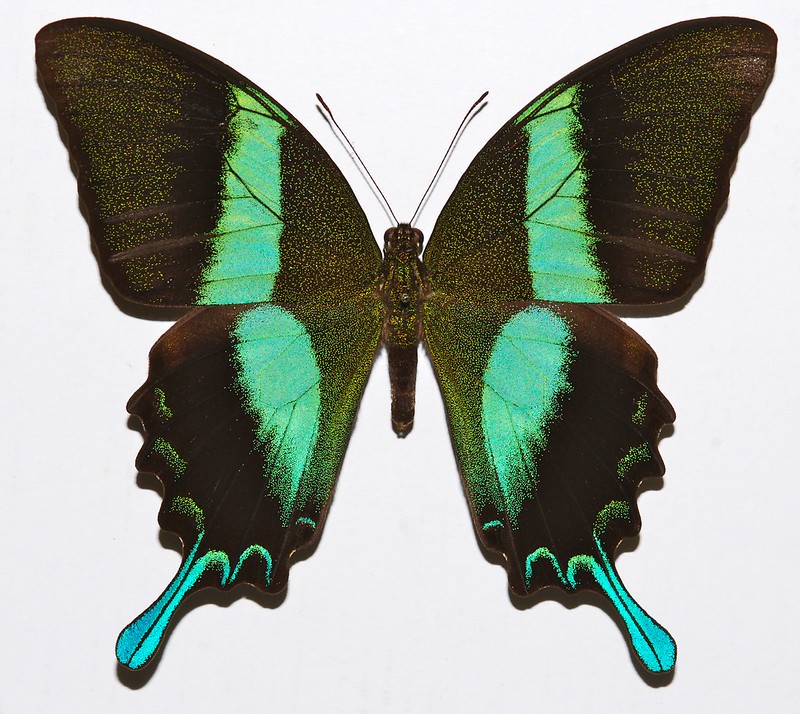
The emerald swallowtail butterfly dazzles with its iridescent green wings, which shimmer in the light. Found in Southeast Asia, this butterfly is an important pollinator for a variety of flowering plants, aiding in the reproduction of many tropical species. Its larvae feed on toxic plants, making them unpalatable to most predators. Adult butterflies serve as food for birds and other animals, ensuring their role in the food chain. The emerald swallowtail’s bright green coloration provides both camouflage and deterrence from predators. This species plays a significant role in maintaining the health and diversity of tropical ecosystems.
Painted Grasshopper (Poekilocerus pictus)
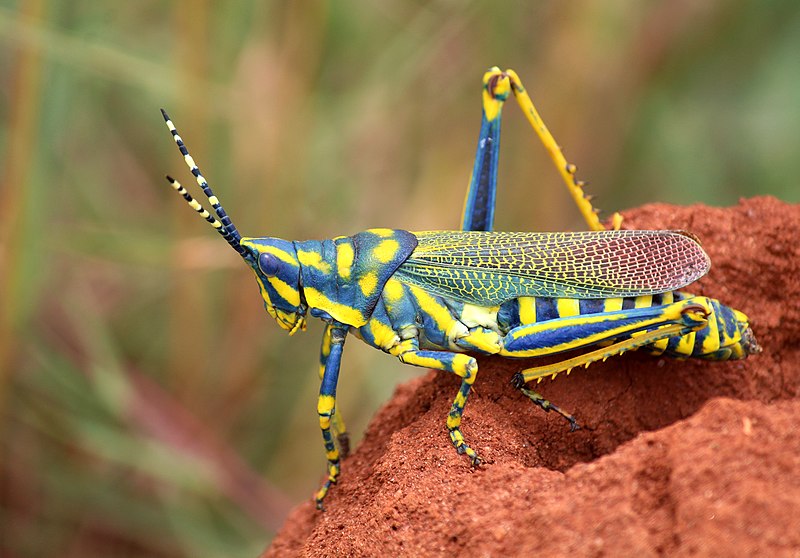
The painted grasshopper, with its vivid yellow, green, and blue markings, is a striking insect found in India and surrounding regions. It helps regulate plant populations by feeding on a variety of vegetation, preventing overgrowth. Its bright coloration is a warning signal to predators, as the grasshopper stores toxic alkaloids from the plants it consumes. Painted grasshoppers are prey for birds, reptiles, and larger insects, supporting biodiversity in their habitats. Their feeding activities also help recycle plant material into the ecosystem. By contributing to both plant management and the food web, they play a critical role in maintaining ecosystem balance.
Fiery Skipper (Hylephila phyleus)

The fiery skipper, known for its orange and black wings, is a common sight in gardens and grasslands throughout the Americas. This butterfly is a key pollinator, visiting flowers in search of nectar and helping plants reproduce. As larvae, they feed on grasses, contributing to plant population control and natural pruning. Birds and other predators rely on fiery skippers as a food source, integrating them into the food chain. Their rapid flight and vibrant color make them a delight for nature watchers, while their ecological role supports plant diversity. The fiery skipper’s contributions highlight the interconnectedness of insects and plant life.
Rainbow Grasshopper (Dactylotum bicolor)

The rainbow grasshopper, native to North America, lives up to its name with its dazzling combination of red, blue, yellow, and green. It plays a critical role in regulating plant populations, as it feeds on various grasses and forbs, preventing certain species from dominating. This grasshopper is also a food source for birds, mammals, and reptiles, contributing to the overall food web. Its vibrant colors serve as a warning to predators, as it consumes toxic plants that make it unpalatable. The rainbow grasshopper helps maintain the health of prairies and grasslands by promoting plant diversity. Its vivid appearance also provides camouflage among wildflowers and grasses, blending into its environment despite its brightness.
This article originally appeared on Rarest.org.
More From Rarest.Org
Science fiction is a genre filled with widely celebrated classics, but many incredible novels fly under the radar. These overlooked gems push the boundaries of imagination, presenting fresh ideas, unique worlds, and thought-provoking themes that deserve more recognition. Read more.
Rare gemstones hold a special allure, not just for their beauty but for their scarcity. Found only in specific regions around the world, these stones are prized by collectors and jewelers alike. Read more.
11 Fascinating Caves with Geological Formations Found Nowhere Else

Caves are some of the most fascinating natural wonders, shaped over millions of years by water, wind, and geological forces. Beyond their hidden beauty, many of these hold unique formations that can’t be found anywhere else in the world. Read more.


